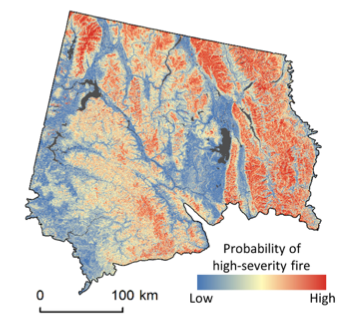From Rocky Mountain Research Station:
“In the Intermountain region of the Western United States, most forested landscapes are fire prone and adapted to a semiarid climate. With the severity of wildfires increasing as a result of excessive fuels, land managers are concerned about forest converting to non-forest types such as shrubland or grassland. “And then when you throw climate change into the mix, the wildfire conversion risk goes even higher,” said Sean Parks, a research ecologist with the USDA Forest Service Aldo Leopold Wilderness Research Institute (ALWRI), Rocky Mountain Research Station (RMRS).”
Read the rest here.

